In today’s fast-paced world of digital marketing, businesses often ask, “Which is better: Link Building vs Content Marketing?” Both strategies are essential for boosting organic website traffic and improving search engine rankings, but the right choice depends on your specific goals.
This guide will explore the key differences between Link Building and Content Marketing, highlighting their unique benefits and how they can work together to enhance your SEO strategy. Whether you’re looking to build high-quality backlinks or create engaging content that drives traffic, Rankonix.com has the tools and expertise to help you achieve your digital marketing goals.
Table of Content
Understanding the Basics: Link Building vs Content Marketing
What is Link Building?
It is the process of acquiring hyperlinks (backlinks) from other websites to your own. These incoming links are a key factor in search engine optimization (SEO) because they signal to search engines like Google that your content is trustworthy, valuable, and relevant. High-quality inward links act as votes of confidence, helping to boost your website’s domain authority and improve its search engine rankings. The more relevant and high-authority inlinks you earn, the more likely your site will rank higher in search results, driving more organic traffic. Popular link-building strategies include creating shareable, high-quality content, reaching out to authoritative websites, and forming relationships with industry leaders or influencers.
What is Content Marketing?
It is a powerful digital marketing strategy focused on content creation and distributing valuable, relevant, and consistent content to attract and engage your target audience. This content can take the form of blog posts, videos, infographics, social media updates, and more. The main goal of content creation is to solve audience problems, provide useful information, and build trust, positioning your brand as a reliable resource. Unlike traditional advertising, content marketing doesn’t focus on direct sales but instead nurtures relationships with potential customers. When done right, branded content not only boosts audience engagement but also supports SEO efforts by generating shareable content that naturally earns backlinks, further improving your website’s online visibility.
Key Differences Between Link Building vs Content Marketing
Objectives
- Link Building: The primary goal of backlink acquisition is to enhance domain authority and improve search engine rankings by acquiring high-quality backlinks from reputable websites. These inward links act as signals to search engines, indicating that your site is trustworthy and credible, which can boost organic traffic and visibility in search results. Hyperlink generation is heavily focused on SEO, emphasizing technical metrics rather than broader marketing objectives.
- Content Marketing: In contrast, content creation revolves around creating valuable, engaging, and informative content to establish meaningful connections with your audience. Its primary aim is to build trust, drive engagement, and foster long-term brand loyalty. While content advertising can indirectly support SEO and attract natural inward links, its broader mission is to nurture relationships and position your brand as an authority in your industry.
Execution
- Link Building: This approach relies on targeted outreach strategies, such as guest blogging on authoritative sites, replacing broken links with your own content, and collaborating with influencers to secure incoming links. It is a highly outreach-driven process that involves researching opportunities and engaging directly with website owners, editors, or influencers. Success often hinges on persistence and effective communication to earn those valuable links.
- Content Marketing: On the other hand, it focuses on producing and distributing high-quality, audience-centric content. This can include blog posts, videos, infographics, eBooks, podcasts, and social media updates. The goal is to educate, entertain, or solve problems for your audience through owned channels, like your website or social media platforms. Unlike link acquisition, content promotion emphasizes crafting a consistent strategy aligned with your audience’s needs and preferences, creating long-term value.
Timeframe
- Link Building: When executed effectively, link acquisition can yield faster results, especially if you secure backlinks from high-authority websites that drive immediate traffic and boost search rankings. However, maintaining these results requires consistent effort, as search engine algorithms evolve and competitors refine their strategies. Without ongoing link-building activities, the benefits may diminish over time, making it essential to sustain your efforts for lasting impact.
- Content Marketing: It is a long-term strategy that takes time to deliver measurable results. It focuses on creating evergreen content that continues to attract traffic, engagement, and citation well into the future. While it may take longer to gain momentum, the benefits are more enduring. Branded Content helps establish organic brand authority and fosters steady audience growth, trust, and improved search visibility over time.
Scalability
- Link Building: Scaling outreach marketing depends heavily on identifying high-quality backlink opportunities and executing targeted outreach campaigns. This process often requires significant manual effort, including researching potential link partners, crafting personalized outreach messages, and negotiating placements. While tools can streamline parts of the process, the human touch remains key, making this strategy time-intensive. When done well, however, hyperlink generation offers long-term SEO advantages by enhancing authority and visibility.
- Content Marketing: It is inherently scalable with a solid content strategy. By creating evergreen content and repurposing it into various formats—such as converting blog posts into videos or infographics—you can expand your reach without constantly producing new material. Strategic promotion across multiple channels, like social media and email campaigns, amplifies the content’s impact, ensuring it continues to engage and attract a broader audience over time.
Risk Factors
- Link Building: It comes with significant risks, particularly the temptation to focus on quantity over quality. Relying on tactics such as acquiring low-quality or spammy backlinks can harm your website’s reputation and SEO performance. Search engines like Google are quick to penalize sites that violate their guidelines through practices like link farms, paid links, or overly optimized anchor text. To mitigate these risks, prioritize earning organic, high-quality incoming links from reputable sources that genuinely enhance your website’s value and authority.
- Content Marketing: While generally safer than backlink acquisition, content advertising is not without its challenges. The most common pitfall is failing to create meaningful, relevant content that resonates with your target audience. Low-quality, generic, or overly promotional content can disengage users and damage your brand’s credibility. By investing in thorough research and understanding your audience’s needs, you can produce valuable, high-quality content that fosters engagement and builds trust over time.
Cost Implications
- Link Building: The cost of hyperlink generation varies widely, depending on the methods and tools you choose. Hiring a professional agency may come with a higher price tag but offers expertise and ensures quality backlinks. On the other hand, using link-building tools for tracking, outreach, and analysis can be a more budget-friendly alternative, though it requires a more hands-on approach. Ultimately, your expenses will depend on the scale and complexity of your link-building strategy.
- Content Marketing: It often requires a significant upfront investment to produce top-notch materials. This may involve hiring skilled writers for compelling blog posts, graphic designers for eye-catching visuals, or video editors to create engaging video content. While these initial costs can seem high, the long-term benefits—improved brand visibility, enhanced SEO, and increased audience engagement—often justify the investment. A well-executed content strategy can generate traffic and leads for months or even years, delivering ongoing value to your business.
Audience Engagement
- Link Building: The primary goal of backlink acquisition is to enhance SEO metrics like domain authority, search rankings, and organic traffic. While these improvements indirectly benefit your audience by increasing your site’s visibility, backlink acquisition itself involves minimal direct interaction with users. It operates largely behind the scenes, laying the groundwork for strategies like content promotion to create a compelling user experience once visitors land on your site.
- Content Marketing: Unlike hyperlink generation, branded content is inherently designed to engage your audience. By delivering valuable, informative, or entertaining content, you can connect directly with your target audience and foster meaningful relationships. High-quality content builds trust, loyalty, and long-term engagement while encouraging interactions such as social shares and comments. Additionally, the increased traffic and user engagement driven by content advertising can boost your SEO efforts, creating a powerful cycle of growth.
Longevity of Impact
- Link Building: It is an effective way to strengthen website authority and improve search rankings, but it requires ongoing effort to sustain results. Links can lose their value over time if they are removed, become outdated, or are devalued due to search engine algorithm changes. To maintain and expand the benefits, consistent monitoring and updates to your link-building strategy are essential.
- Content Marketing: Content creation, especially when focused on evergreen topics, offers a more enduring impact. Well-crafted content can continue to drive traffic, generate leads, and engage users for months or even years after publication. With occasional updates and proper optimization, evergreen content remains relevant and valuable, delivering long-term benefits with minimal maintenance.
Why Content Marketing is a Long-Term Strategy for Business Growth

It is a proven way to drive sustainable results. Unlike traditional marketing, it focuses on creating value for your audience, building trust, and fostering long-term growth. According to Demand Metric, content marketing costs 62% less than traditional marketing but delivers 3 times more leads, making it a cost-effective and powerful strategy.
By investing in high-quality, SEO-optimized content, businesses can:
- Build authority in their niche: Sharing valuable, informative content positions your brand as a trusted industry expert.
- Grow a loyal audience: Consistently engaging content keeps people coming back, boosting brand loyalty and retention.
- Improve SEO and earn backlinks naturally: Quality content attracts organic ininks, helping your website rank higher in search engine results.
The Power of Consistent Blogging
Data shows that companies publishing 16 or more blog posts per month generate 3.5 times more traffic than those posting fewer than four (HubSpot). This demonstrates how a consistent content advertising strategy can significantly boost website traffic and search rankings over time.
“High-quality content is the foundation of any successful digital marketing strategy.”
Types of Link Building Strategies in SEO
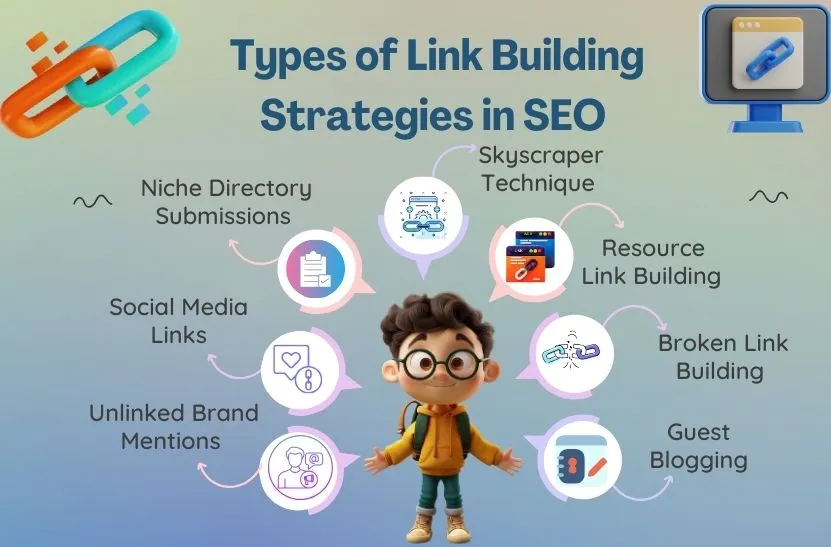
Hyperlink generation is a critical part of any successful SEO strategy. It helps improve your website’s authority, boost search engine rankings, and drive organic traffic. However, no single link-building strategy works for everyone—each business needs a tailored approach. Here are some of the most effective link-building techniques to strengthen your SEO and grow your online presence:
1. Guest Blogging
Guest blogging is one of the most popular link-building strategies. By writing high-quality articles for reputable websites, you can earn backlinks while reaching new audiences. This method not only enhances your backlink profile but also establishes your authority in your niche.
2. Broken Link Building
Broken hyperlink generation is an effective way to secure high-quality backlinks. Find broken links on relevant websites and offer your content as a replacement. This tactic benefits both parties—you help site owners fix their broken links while gaining valuable inlinks for your website.
3. Resource Link Building
Get your content featured on curated resource pages that are relevant to your industry. These pages are trusted sources of information and can drive significant traffic to your site while improving your SEO rankings.
4. Skyscraper Technique
The skyscraper technique is all about creating better content than what’s already ranking high on search engines. Publish comprehensive, engaging, and high-quality content, then promote it to the right audience to attract backlinks from other websites.
5. Niche Directory Submissions
Submitting your website to niche directories with strong domain authority can help you gain incoming links and improve your SEO. These directories also connect you with targeted audiences in your industry.
6. Social Media Links
Sharing your content on social media platforms is a great way to amplify its reach and generate natural inlinks. While these links are often no-follow, they still drive traffic and increase your content’s visibility.
7. Unlinked Brand Mentions
Do you know your brand is being mentioned online but not linked? Reach out to website owners and request they turn those mentions into citation. It’s an easy way to strengthen your link profile and make the most of your existing brand presence.
Link Building vs Content Marketing: Which Delivers Better ROI?
- Content Marketing: It offers long-term ROI by driving organic traffic, establishing brand authority, and fostering lasting customer loyalty. By producing valuable, engaging content, businesses build trust and position themselves as industry leaders. It’s a strategy that grows with your brand, delivering compounded benefits as your content library expands.
- Link Building: Backlink acquisition, in contrast, delivers faster, more immediate results, primarily through improved search engine rankings. However, maintaining these results requires ongoing effort. Without consistent link acquisition, rankings risk stagnating or declining, making this a strategy that often demands continuous investment.
Key Metrics to Measure Success:
- Content Marketing: The success of branded content is assessed through metrics such as engagement rates, time on page, conversions, social shares, and organic traffic growth. These indicators reveal how well your content resonates with your audience and meets their needs.
- Link Building: For hyperlink generation, critical metrics include domain authority, the quantity and quality of incoming links, referral traffic, and the impact on search engine rankings. These measurements demonstrate the effectiveness of your outreach efforts and the authority your website builds over time.
Which Strategy is Right for You?
If you’re looking for quick SEO results and improved rankings, backlink acquisition is a great option. For long-term growth and a stronger connection with your audience, branded content is essential. The best approach? Combine both strategies for a balanced, high-impact digital marketing plan.
How to Combine Link Building and Content Marketing for Maximum SEO Impact
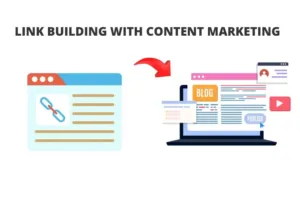
In digital marketing, the key to success lies in combining link building and content marketing into a single, cohesive strategy. Together, these tactics can boost your website’s traffic, domain authority, and search engine rankings. Here’s how to effectively merge the two:
1. Create Shareable, Link-Worthy Content
Focus on producing high-quality content that naturally attracts backlinks. Use formats that perform well for SEO, like:
- Infographics
- In-depth case studies
- Comprehensive guides
- Research-driven articles
- Interactive tools
These types of content creation not only engage your target audience but also encourage other websites to link to your site organically.
2. Use Strategic Outreach for Backlinks
Once your content is live, actively pursue incoming links by reaching out to relevant websites, bloggers, and industry influencers. Personalize your outreach emails and highlight how your content provides value to their audience. Strong content combined with targeted outreach turns your content into a powerful link-building asset.
3. Promote on Social Media for Greater Visibility
Share your content widely across social media platforms to increase its reach. Social engagement enhances your content’s visibility and helps it earn organic inlinks. Use popular hashtags, tag influencers, and encourage sharing to amplify your content’s performance.
4. Collaborate with Partners in Your Niche
Co-create content or exchange inlink with businesses and organizations in your industry. Collaboration helps you tap into new audiences, grow your professional network, and increase your chances of earning high-quality backlinks.
5. Track Performance and Adjust
Use SEO tools like Google Analytics or Ahrefs to monitor your content’s performance. Keep an eye on metrics like:
- Backlink growth
- Referral traffic
- Social shares
- Engagement rates
Use these insights to refine your content and link-building strategies over time, ensuring better results.
By combining content marketing with link building, you can create a scalable SEO strategy that drives traffic, enhances visibility, and builds long-term domain authority.
Essential SEO Tips for Better Rankings
Want to rank higher on search engines? Follow these tried-and-true SEO tips:
1. Use Strategic Keywords
Identify high-impact keywords like “backlink acquisition strategies,” “content creation tips,” and “SEO best practices.” Integrate these naturally into your:
- Titles and headings
- Meta descriptions
- Alt text and body content
This helps improve your website’s search engine rankings while keeping your content easy to read.
2. Align Content with Search Intent
Understand what your audience wants by researching common queries in your niche. Answer those questions clearly and thoroughly. Content that matches user intent not only ranks higher but also builds reader trust.
3. Track SEO Metrics Regularly
Monitor key metrics like website traffic, keyword rankings, and citation using tools like Google Analytics or SEMrush. Regularly reviewing these metrics allows you to refine your strategy and achieve better results.
4. Diversify Your Backlink Sources
Avoid relying on just one type of backlink. Build a diverse link profile with strategies like:
- Guest blogging
- Directory submissions
- Social mentions
A varied backlink portfolio strengthens your site’s authority and shields it from search engine penalties.
5. Optimize Internal Links
Use internal linking to connect related pages on your website. This improves your site’s structure, helps search engines crawl your content more effectively, and keeps users engaged longer.
“The best SEO strategies combine technical optimization with engaging, high-quality content. Data-driven insights paired with creative storytelling allow businesses to connect with their audiences and outrank competitors.”
Why Choose Rankonix.com for Your Digital Marketing Needs?
At Rankonix.com, we specialize in helping businesses combine content marketing and Link Building for maximum impact. Let’s help you improve your rankings, attract more visitors, and grow your online presence.
- Higher search rankings.
- Increased organic traffic.
- A strong and credible online presence.
Call to Action
Ready to boost your digital marketing game? Contact Rankonix.com today to discover how our tailored strategies can help you achieve your goals. Let’s turn your website into an authority in your industry!
FAQs
Q. What is the difference between link building vs content marketing?
Backlink acquisition focuses on acquiring backlinks to improve SEO rankings, while content marketing centers on creating valuable content to engage and attract an audience.
Q. How many types of link building are there in SEO?
There are various types, including guest blogging, broken link building, resource backlink acquisition, and the skyscraper technique.
Q. Which is better for long-term success: link building or content marketing?
Content marketing is better for long-term success as it builds authority, engages audiences, and attracts organic backlinks over time.
Q. Can link building work without content marketing?
They complement each other. While hyperlink generation can work independently, combining it with content marketing ensures better results and sustained growth.
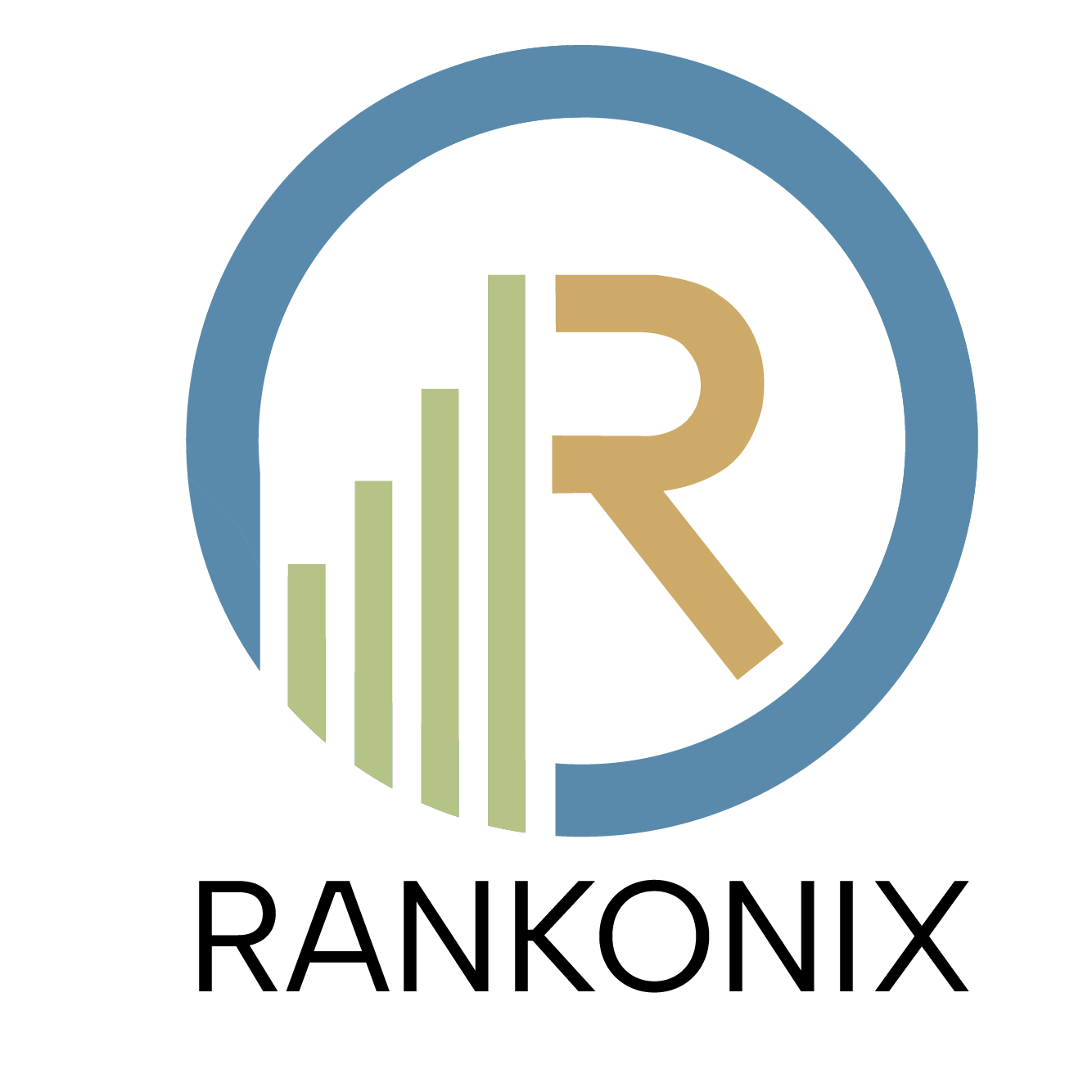
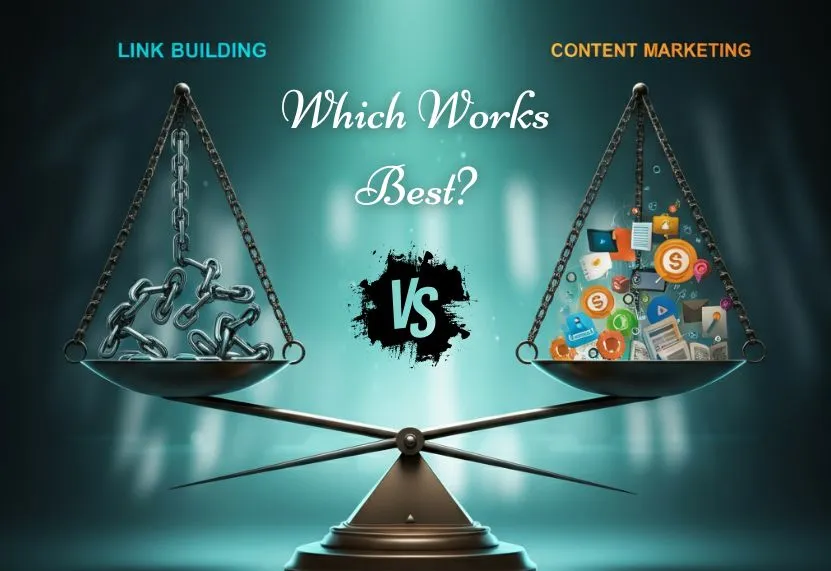
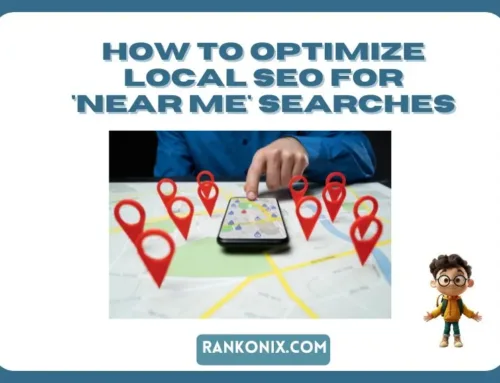
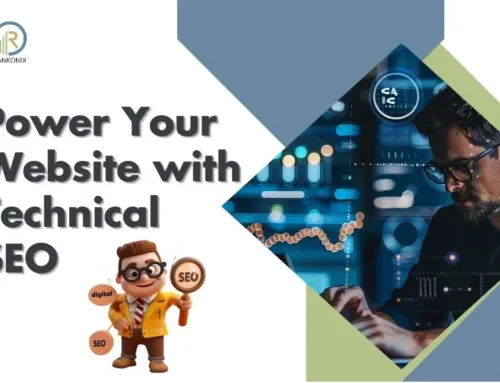
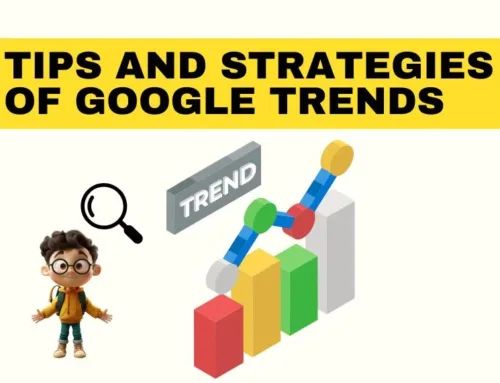
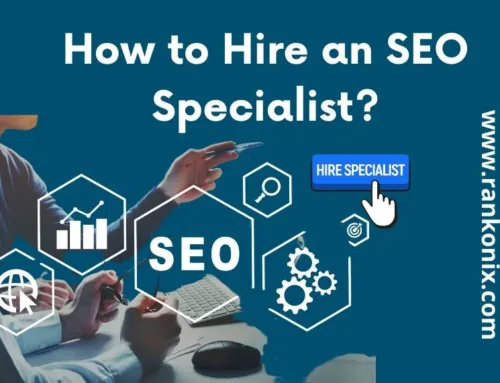
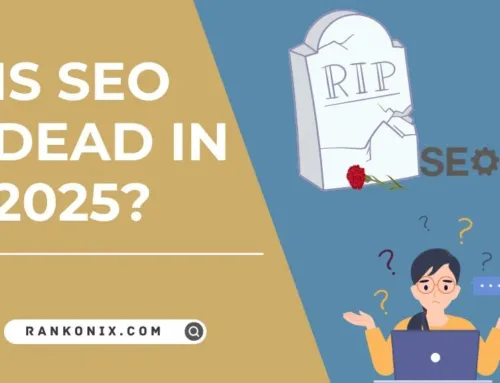
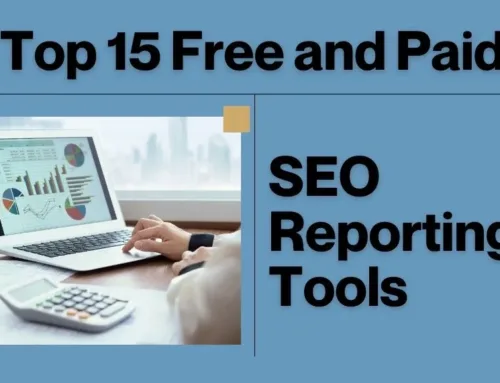
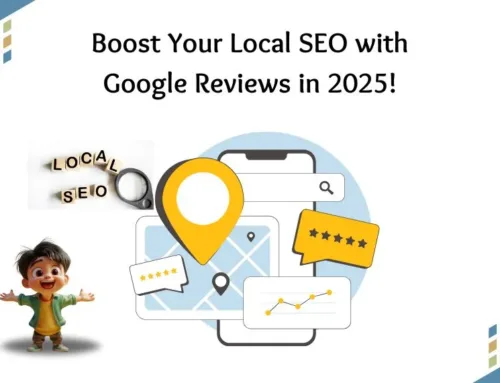

[…] their link-building strategies. Known for its comprehensive data, Majestic allows users to track link-building progress, analyze backlink profiles, and identify opportunities to strengthen their website’s authority […]